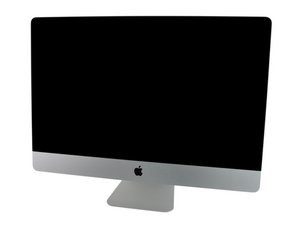This should be pretty straightforward, but a couple of questions first:
- Did you format the SSD as an HFS+ drive with GUID partition table before you installed it?
- Do you have some bootable drive (either the internal optical drive or an external) with an appropriate OSX installer ready?
- Did you replace the existing hard drive cable with a shiny new cable?
1) and 2) If you've installed a brand new, unformatted drive without attaching a drive with a bootable operating system, then the computer has no drive to boot from at all. The flashing ? is the sign that the iMac can't find a bootable OS; if you attach a bootable drive, the iMac will grab onto it and boot from that drive. In order to set up the new drive, you have to boot from something else to get access to the formatting tool (Disk Utility) and an OS installer.
If you have access to another working Mac, you can download an OS X 10.11.3/El Capitan installer from the App Store and then clone the installer to a thumb drive. The installer has a copy of Disk Utility, which you can use to format the internal SSD; you can then run the installer and you'll get a plain-vanilla El Capitan system.
If you have the old hard drive you pulled out when you swapped the SSD in, you can attach that drive to the computer with a USB or FireWire adapter/case, boot from that, then format the SSD, download the OS installer and run it on the internal drive. If you leave the old external drive attached when the iMac restarts into the new OS, you'll get an opportunity to transfer all your user accounts and applications from your old system.
One way to approach this issue is to format the SSD externally and install an OS on it before installing it inside the computer. Getting a drive into an aluminum iMac is a big job; I'd want to make absolutely sure the new drive was ready to go before doing all that work.
3) is an issue specific to the installation of new SSDs in older Macs. There was a window of several years (roughly 2008-2011) when the hard drive cables were good enough to carry data at platter drive speeds, but got finicky when you ran data off the much faster SSDs. I had this experience with a 2010 MacBook Pro last week; the recommendation from OtherWorld Computing was to replace the old hard drive cable with a brand new one. I got a replacement from iFixit, and it worked perfectly.
This is a stunt that's probably not worth worrying about unless the drive doesn't work with the cable you already have; but just in case...
iFixit doesn't carry a specific SATA cable for a 2010 iMac. PowerBookMedic carries one that appears to be a normal SATA cable; it might be reasonable to get a new regular SATA cable of appropriate length and try that.
iMac Intel 27" EMC 2390 Hard Drive Replacement
How do I install the OS on to the drive
crwdns2934105:0crwdne2934105:0
crwdns2934113:0crwdne2934113:0
crwdns2915270:0crwdne2915270:0
crwdns2889612:0crwdne2889612:0
6

 2
2  2
2  6
6
crwdns2947414:01crwdne2947414:0
Just clone your bootable old drive onto the new ssd drive using carbon copy cloner.
Your new drive will then be bootable. wala
http://bombich.com
crwdns2934271:0crwdnd2934271:0 Daniel James crwdne2934271:0